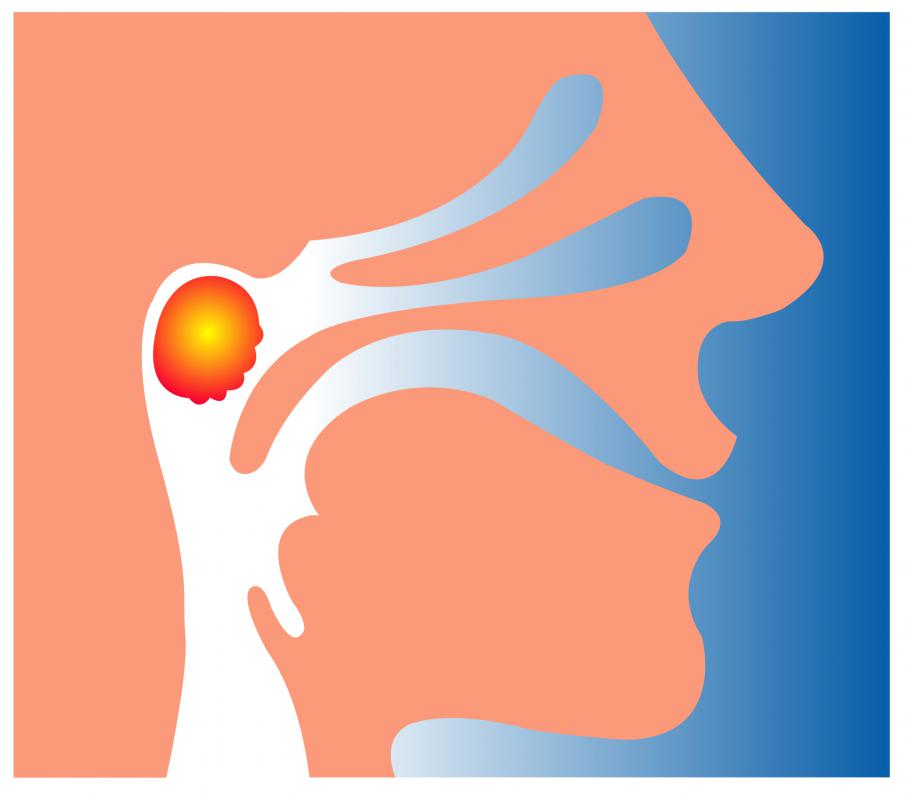At WiseGEEK, we're committed to delivering accurate, trustworthy information. Our expert-authored content is rigorously fact-checked and sourced from credible authorities. Discover how we uphold the highest standards in providing you with reliable knowledge.
What Is the Difference between a Tonsillectomy and an Adenoidectomy?
A tonsillectomy and an adenoidectomy are surgical procedures that remove structures from the throat or nasal cavity. Tonsillectomies are usually performed to treat tonsillitis, while adenoidectomies are often used to treat enlarged or swollen adenoids. The two surgeries can be combined to treat breathing difficulties and related conditions. Whether a tonsillectomy and an adenoidectomy are performed together or separately, they are some of the most common surgeries in the United States.
Tonsils, two clumps of tissue on either side of the throat, help the body fight off bacteria and viruses that enter the mouth. Adenoids, clusters of tissue located in the nasal cavity that are not readily visible, perform a similar function. Both tonsils and adenoids are prone to infection, especially in children, because they are more active as still-developing bodies build up their other immunity functions. Doctors might treat these infections by removing the tissues, performing a tonsillectomy and an adenoidectomy.

The most common reason to perform a tonsillectomy is to treat tonsillitis, an infection of the tonsils. Tonsillectomies can also treat enlarged tonsils that interfere with breathing, such as when it complicates obstructive sleep apnea, a serious condition in which a patient repeatedly stops breathing momentarily during sleep. In addition, tonsillectomies are sometimes used to treat cancerous tissue in the tonsils, bleeding from the tonsils or surrounding areas, or a peritonsillar abscess, which is a collection of pus near an infected tonsil. Due to their location, tonsils are removed without cutting through the skin, and the surgery generally lasts from 20 to 30 minutes.

Adenoidectomies are generally performed for similar reasons: to treat infection or airway obstruction. Swollen adenoids can also contribute to ear infections, so adenoidectomies are sometimes used to treat some chronic ear conditions. Children who have chronic tonsillitis might also have their adenoids removed as part of their tonsillitis treatment. Since adenoids are above the roof of the mouth, the surgeon uses special devices to perform the 20 to 30 minute procedure. These devices, such as a mirror and curette, help the surgeon to see behind the nasal cavity and to remove the adenoids without cutting through the skin.

Although these two procedures might be used alone to treat similar or different conditions, it is common to have a tonsillectomy and an adenoidectomy at the same time. In fact, together, they are the most common surgery performed on children. A tonsillectomy and an adenoidectomy procedure is considered major surgery, but poses few risks and is very effective, especially in the treatment of obstructive sleep apnea in children.
AS FEATURED ON:
AS FEATURED ON:















Discuss this Article
Post your comments